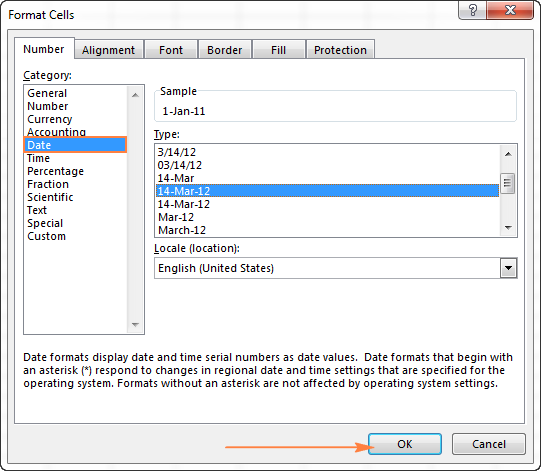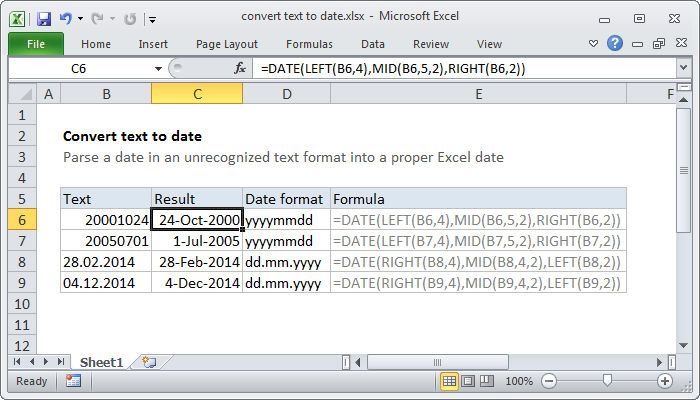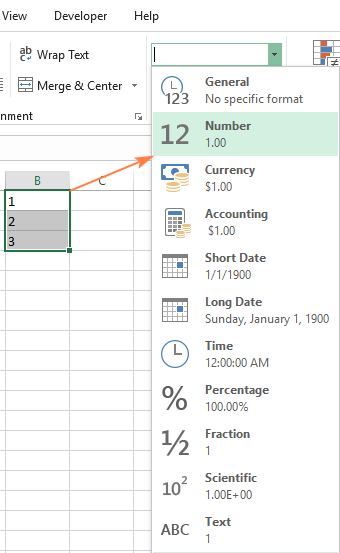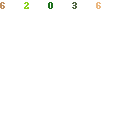Javascript String to Number conversion is an easy and customary operation. There are a variety of techniques employing which we will get hold of the numerical worth of the variety inside a string. In this section, we'll talk about all of the workable strategies which might be included in our code for a similar and talk about which might be desirable during which situations. Here, we will use some built-in strategies or some mathematical operators, or another methods to acquire numerical worth from the string.
An various approach to changing a string right into a wide variety is to make use of one among several international capabilities designed to parse a string and return a number. The parseFloat operate accepts a string argument and returns a floating level wide variety ensuing from parsing that string. Non-string arguments are first type-converted to a string as described above.
When objects or features are type-converted to strings theirtoString process is called. These default toObject.prototype.toString andFunction.prototype.toString however could very well be overloaded with a perform assigned to a "toString" property of the object/function. Type-converting a perform to a string doesn't inevitably lead to the function's supply code. The behaviour of Function.prototype.toString is implementation depended and varies fantastically a lot, as do the outcomes from "host objects" and strategies . ToInt32 is an inner perform solely attainable to the Javascript implementation and can't be referred to as instantly from scripts within the best means that parseInt can. It is a bit uncommon to say it in reference to changing Javascript values to numbers however could be utilized in a restricted set of circumstances.
The bitwise operators comparable to bitwise OR (|) and bitwise AND (&) function on numbers in order that they type-convert their operands to numbers. That returned worth is usually a 32 bit signed integer. There are time whenever you must convert a String to a Number in JavaScript.
This might be very valuable in lots of situations, consisting of when taking enter from a consumer and passing that on to a perform or object property. This article reveals you ways to make use of a brief hand with the + operator , in addition to applying the parseInt(), parseFloat(), and Number() system for parsing string values right into a number. The unary plus operator (+) positioned earlier than a string converts it to an integer or floating level number, or returns NaN if the enter worth does not characterize a number. Like the Number() function, it returns zero for an empty string (+''). The parseInt perform converts its first argument to a string, parses it, and returns an integer or NaN.
If not NaN, the returned worth would be the integer that's the primary argument taken as a variety within the required radix . For example, a radix of 10 shows to transform from a decimal number, eight octal, sixteen hexadecimal, and so on. For radices above 10, the letters of the alphabet point out numerals higher than 9.
For example, for hexadecimal numbers ,A using F is used. The following dialogue is illustrated with Javascript generated tables of values ensuing from the conversion operations. The headers of these tables show the values as represented within the Javascript supply code used relatively then their inner representation.
So, for example123e-2 as a wide variety was the character sequence typed into the supply code, the interpreter reads that and generates the wide variety worth 1.23 from it for inner use. The numerous values used for the exams have been chosen as an instance elements of kind converting, these elements could not apply to all the tables presented. However, all the experiment values are included in all the tables for full comparison.
The our bodies of the tables record the outcomes of the varied style conversion operations. In JavaScript parseInt() perform is used to transform the string to an integer. This perform returns an integer of base which is laid out in second argument of parseInt() function. ParseInt() perform returns Nan when the string doesn't include number. Converting values to numbers, principally strings to numbers, is a particularly normal requirement and lots of techniques might possibly be used. Any mathematical operator besides the concatenation/addition operator will pressure type-conversion.
Javascript parseInt() is an inbuilt operate that convert string to number. Javascript parseFloat() is an inbuilt system that converts the stringto floating number. So, there are different strategies in Javascript that convert to number. There are additionally different regular bases corresponding to 2 for the binary programs utilized by personal workstation programs or sixteen for the hexadecimal system additionally principally utilized in personal workstation tools.
The parseFloat() operate accepts a string parameter and converts it to an floating level variety , or returns NaN if the enter worth does not characterize a number. If the enter string begins with a variety (e.g. '123abc') then parseInt() will return the variety from the start of the string (e.g. 123). If the enter is an empty string (Number('')) then NaN is returned. The parseInt() operate accepts a string parameter and converts it to an integer number, or returns NaN if the enter worth does not characterize a number. The Number() operate accepts a string parameter and converts it to an integer or floating level number, or returns NaN if the enter worth does not characterize a number. An fascinating factor to notice is that zero is returned for an empty string (Number('')).
While unary + is the quickest method for changing a string to a quantity a ultimate method is on the market that makes use of the Javascript type-conversion algorithms. The Numberconstructor may be referred to as with the string worth as its argument and its return worth is a quantity representing the results of the type-conversion. But there are two fundamental methods to transform a string to a quantity in javascript. One method is to parse it and the opposite method is to vary its kind to a Number. There are some methods to transform string to quantity in javascript/typescript however it's upto the developer to decide on definitely the appropriate strategy situated on efficiency or readability.
One of the methods to retrieve numbers out of string is employing the floor() approach to the Math library supplied in javascript. We could observe that the decimal digits are rounded and solely the integral worth of the string is returned once we use Math.floor() function. Let us test the approach it features with the assistance of an example. You can use the javascript parseInt() approach to transform the string to a number. To converta stringto an integerparseInt()function is utilized in javascript. If a string with a variety is shipped then solely that variety will probably be returned because the output.
If any explicit quantity with areas is shipped then the component of the quantity that presents earlier than area might be returned because the output. Treating an undefined worth as if it was an object will produce errors. So when there's a doubt then code can avert producing errors by wrapping the code that desires to entry an object in an if test.
Supplying the suspect reference to the item because the expression. The expression will probably be kind transformed to boolean and lead to false if the item doesn't exist and true if it does. Javascript being loosely typed and keen to type-convert nonetheless doesn't save the programmer from needing to consider the precise sort of values that they're dealing with.
The unary plus is the quickest and most popular method of changing a string right right into a number. We can convert string to an integer or wide variety with few totally completely different ways. In this article, we'll see all alternative techniques to transform string to wide variety in javascript or typescript or in angular. As the identify suggests, the Number() method converts a string right right into a number. It takes one argument that may be an integer, some extent number, a boolean value, or perhaps a date object.
However, for those who move a string that consists of random characters, you'll get NaN — stands for "Not a Number." The parseInt system parses a worth as a string and returns the primary integer. If the primary character can't be converted, NaN is returned. The parseInt() system takes a string because the primary argument. It additionally takes a base to which the string might be converted. ParseInt('0', 10) will convert the string ('0') right into a wide variety , do not neglect the second argument, which is radix.
If not given, parseInt might convert string to flawed number. You additionally can multiply a string by one to transform it right into a number. This is has additionally the good thing about being among the quickest strategies in JavaScript. It's a twin of the + unary operator, because it does not carry out conversion to an integer if the wide variety is a float.
ParseInt() can additionally convert hexadecimal values and values with the several base quantity systems, just like the binary system, the octal system, etc. Similarly, we will use parseFloat() to transform a string to a floating-point number. Another method of handling string numbers is utilizing the parseInt() approach to JavaScript. ParseInt() takes two arguments, one is the string that should be converted, and the opposite one is the radix . Most numbers that we cope with in our day-to-day life are often within the bottom of 10, which signifies a decimal value.
In most cases, we don't have to specify the radix because the default is 10. The parseInt operate converts its first argument to a string, parses that string, then returns an integer or NaN. There are two predominant techniques to transform a string to a quantity in javascript. All of the tips within the opposite solutions (e.g. unary plus) contain implicitly coercing the kind of the string to a number. You additionally can do the identical factor explicitly with the Number function. Style options the kind of the values at varied levels is illustrated by the color of the textual content used.
That crisis arises from the twin nature of the + operator used for each numeric addition and string concatenation. With which the character of the operation carried out is decided by the context, the place provided that each operands are numbers to commence out with will the +operator carry out addition. Otherwise it converts all of its operands to strings and does concatenation. Probably the most effective system to transform string to variety is the Number() function.
Math.floor() may even be used to transform the string to quantity in javascript. It can not work for floating level numbers because it spherical offs the number. However it doesn't converts strings with separators like Number("24,000") as you'll be able to see it returns NaN. If you desire to transform string with separators then use Intl.NumberFormat. The parseInt() perform parses a string and returns an integer.
The first argument is the worth to parse and the second argument base, if present, specifies the bottom of the variety whose string illustration is contained within the string. We can use parseFloat() system to transform string to a floating-point number. This system takes just one parameter which must be a string.
We can use parseInt() operate to transform a string to quantity in Javascript. The first parameter could be a string and the second parameter could be the base. We are speaking about decimal level numbers here, so the bottom will probably be 10 in our case. In Java, we will use Integer.valueOf() and Integer.parseInt() to transform a string to an integer. Use Integer.parseInt() to Convert a String to an Integer. This technique returns the string as a primitive style int.
Use Integer.valueOf() to Convert a String to an Integer. The one more strategy to transform string to wide variety is applying unary plus operator. We can even convert string to wide variety in typescript or javascript by multiplying wide variety with 1.
We'll see examples to transform string to quantity for all the above methods. JavaScript delivers a wide range of techniques to transform string values to numbers. One of the tips which may be carried out is making use of + operator whereas retrieving the number. Javascript immediately converts the string into the suitable numerical worth and helps us get the quantity out of string. The precision of decimal numbers can additionally be preserved whereas making use of this trick. We can use the Number object to retrieve the quantity format worth of the string.
Here, we have to do not forget that Number is a wrapper class datatype that may be used for a lot of purposes. If we use a brand new Number() in preference to simply Number() then we get a brand new object style of object in preference to simply the worth of the wide variety in that string. This approach may be utilized once we wish to maintain the decimal worth meaning digits specified after the decimal level within the number. Let us see with the assistance of an instance of the way it's utilized in javascript. You may additionally use the javascript number() approach to transform the string into wide variety in javascript.
In this tutorial, we've got seen a couple of diverse strategies of changing strings to numbers in Javascript. Though there are various legitimate techniques of manipulating data. It is as much as the programmer to come to a decision which one they prefer; settling on efficiency over readability or a stability between the attainable options. In this brief tutorial we're going to learn tips on how to transform string to wide variety with JavaScript. We will inspect the several strategies and their syntax with examples. Negative hexadecimal numbers are the one ones that break inside a string.
Any different wide variety ought to be first parsed right into a String (through + "" for instance) after which parsed to a wide variety with a unary operator or a parseInt with a radix. ParseFloat takes improvement of performance, however may offer you some numeric values the place a NaN is extra appropriate. There are varied methods of changing a string into number, some built-in strategies in addition to another operators to make use of for this purpose. In this text we mentioned completely different built-in strategies in addition to some methods of changing a string into numbers. Sometimes we wish to carry out varied operations on some numbers and these cannot be carried out when the info variety of those numeric values is String.
That's why JavaScript promises customers with built-in strategies to transform Strings into numbers and make the duty of performing operations and completely different operators on these numbers easier. Depending upon the worth that we count on out of the string number, the most efficient valuable choice might be to make use of the Number() method. If you're twiddling with solely integer values, we suggest making use of the parseInt(). Make considered use of the in-built Math object in JavaScript to transform a string wide variety because it might be tough based mostly on the tactic that we use. Use parseFloat() function, which purses a string and returns a floating level number.



























No comments:
Post a Comment
Note: Only a member of this blog may post a comment.